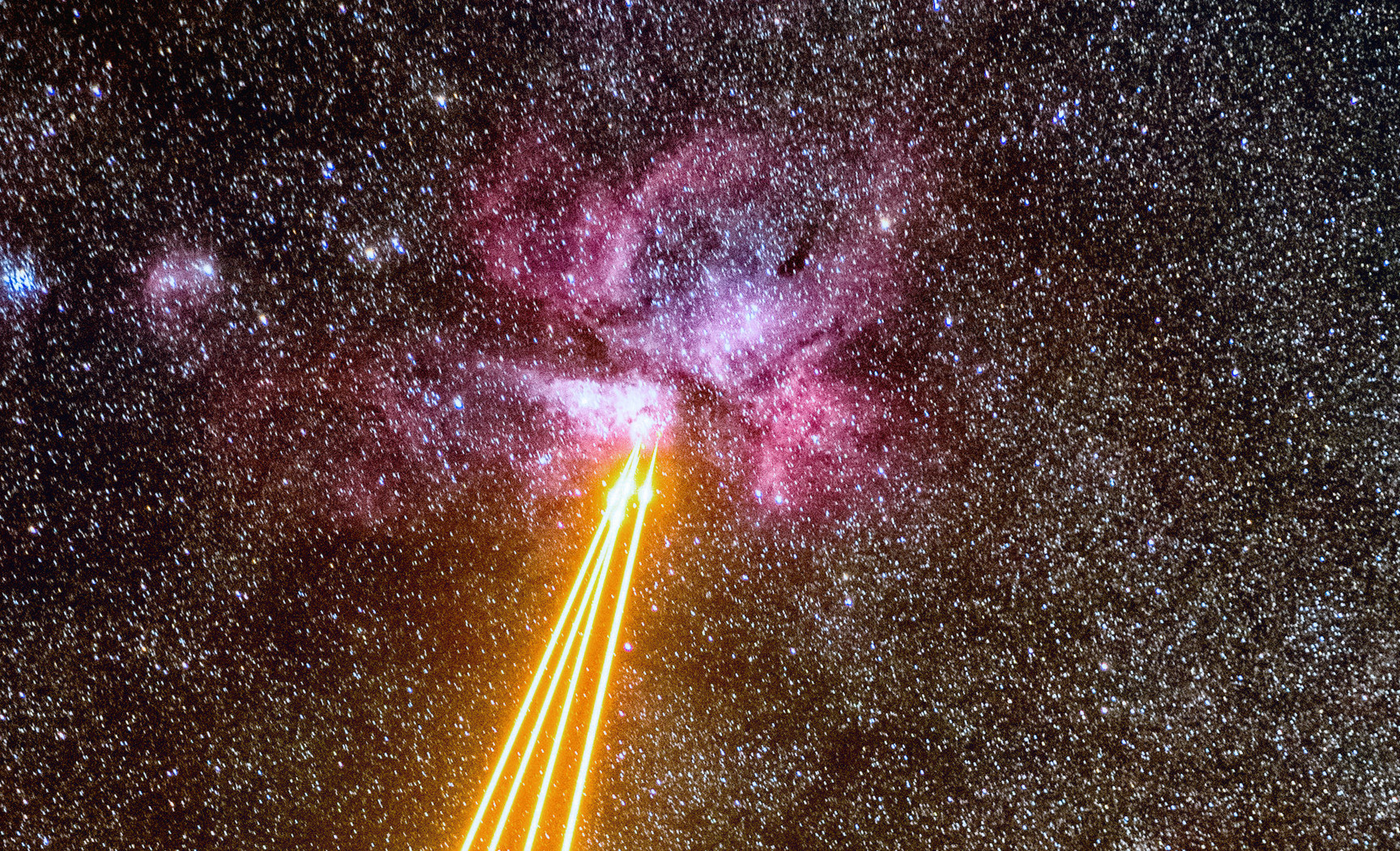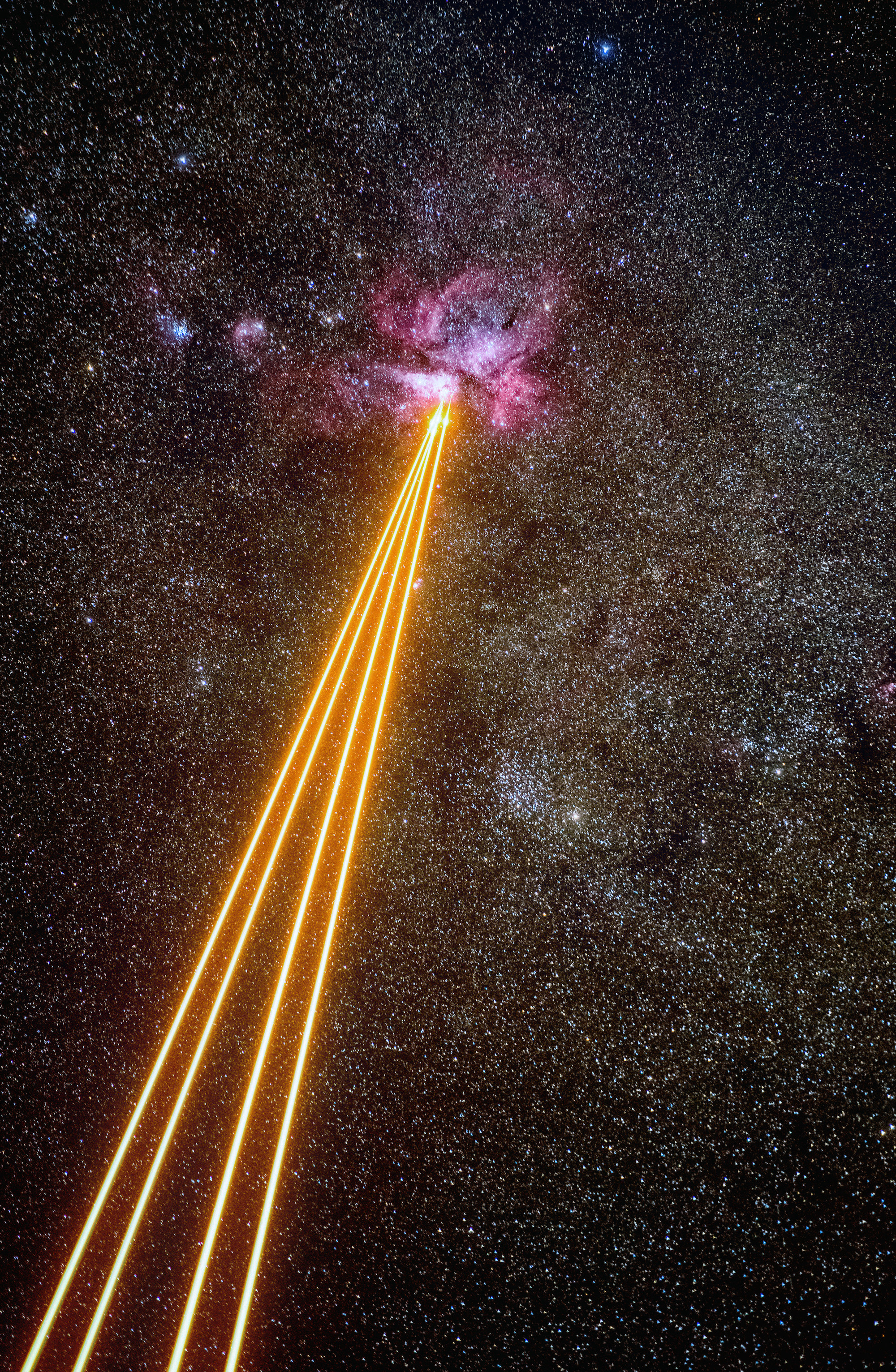Earth is fighting a laser duel with the exploding Carina Nebula
Eta Carinae has been exploding for nearly 200 years, and now we're firing lasers at it.

Four orange laser beams blaze through the Milky Way while an angry purple nebula transfixes us with its death-stare. Happily (or sadly, depending on how much news you've consumed this week), Earth is not doomed; in fact, it's an Earthly telescope that's launching the lasers in this epic image from the European Southern Observatory (ESO).
Dubbed ESO's picture of the week, this shot looks like a cosmic battle to the death, but it actually captures a clever astronomical trick that scientists use to peer across time and space. The purple star system pictured here is the Carina Nebula, sometimes called the Eta Carinae nebula in honor of its most famous star system. Eta Carinae — actually a pair of two giant stars — has been steadily exploding in a spectacular eruption of gas and dust for nearly 200 years. Though the system is located about 7,500 light-years from Earth, this ever-brightening explosion has rendered it one of the most luminous star systems in the Milky Way.
Related: 9 Strange Excuses for Why We Haven't Met Aliens Yet

Seeing that far into space can be tricky, even when gazing at one of our galaxy's brightest objects through one of Earth's mightiest telescopes (in this case, the ESO's Very Large Telescope, located in Chile). One niggling problem: Earth's gassy atmosphere always gets in the way, blurring and distorting the view of celestial objects.
That's where the lasers come in. According to the ESO, scientists fire these lasers from one of the Very Large Telescope's component pieces to simulate distant stars. (Sodium particles in the atmosphere cause the beams to glow orange.) Astronomers then focus on these artificial stars to measure how much the beams are being blurred by Earth's atmosphere. By practicing with fake stars, astronomers can more effectively calibrate the telescope to correct for atmospheric blurring when looking at real stars, galaxies and explosive objects like Eta Carinae, according to the ESO.
So, to summarize: Earth scientists are actively shooting lasers into the heart of an exploding star system — but only so they can get to know it better. In our strange and beautiful Milky Way, it's just the neighborly thing to do.
Originally published on Live Science.
Sign up for the Live Science daily newsletter now
Get the world’s most fascinating discoveries delivered straight to your inbox.

Brandon is the space/physics editor at Live Science. His writing has appeared in The Washington Post, Reader's Digest, CBS.com, the Richard Dawkins Foundation website and other outlets. He holds a bachelor's degree in creative writing from the University of Arizona, with minors in journalism and media arts. He enjoys writing most about space, geoscience and the mysteries of the universe.









